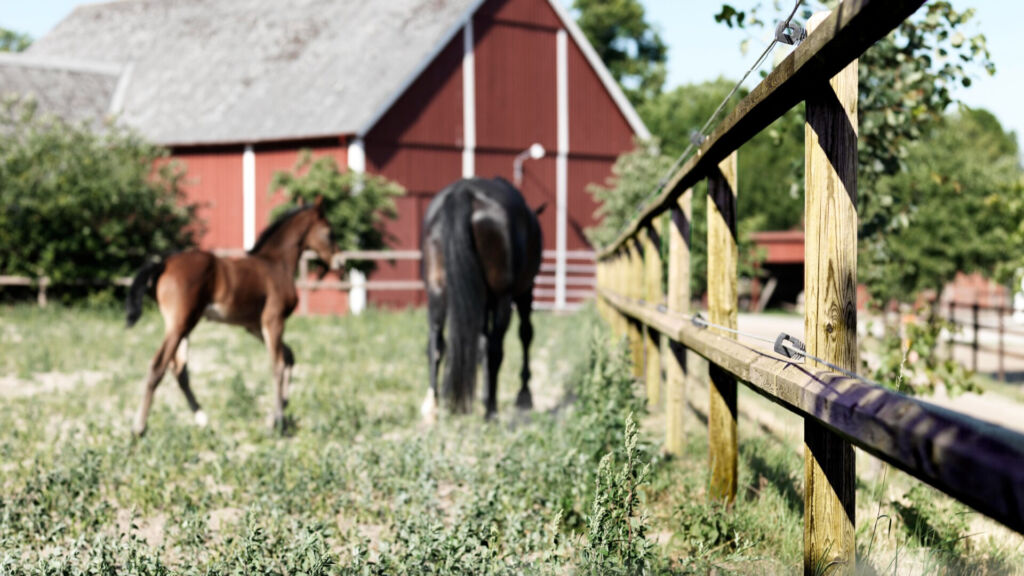
At Octowood we closely choose our raw-material and treat our wooden posts with wood protection treatment to guarantee exceptional sustainability. In November 2022, EU member states voted in favor to ban the sale and use of creosote-treated timber fencing from 30 April 2023. This ban has understandably caused concern for those looking for robust and durable fencing for agricultural and equine use. Anticipating that further restrictions on creosote were to be introduced, we have been working with suppliers for a viable alternative to provide long-term protection to the Octopost® range.
After an extensive review, we have chosen to treat posts with Tanasote®, a modern hot oil-based copper wood preservative. We are working closely with the market to ensure a smooth transition from creosote treated timber to Tanasote® and now enter a period of systematically introducing Tanasote® treated posts on our different markets, initially Irland and England, in parallel with our other wood protection treated posts.
With over a decade of research and development and with Biocidal Products Regulation (BPR) authorisation in 22 countries, Tanasote® has been subject to extensive risk assessments covering the environment, as well as human and animal health. Developed to protect industrial timbers, it has been specifically designed to minimise early failures whilst providing a long service life.
Performance of Tanasote treated fence posts
As well s independent field test trials [1], Tanasote® has been tested in commercial size commodities in collaboration with manufacturer Arxada, a leading global specialty chemicals company.
Back in 2019, a 150-metre run of Tanasote® treated stock fencing was installed by Tim Bennett Farm Fencing, a UK-based fencing contractor with 30 years’ experience working directly with farmers, landowners and land agent companies managing farms and estates across the UK and Europe. Of the installation, Tim says: “In my experience, four years is enough time to detect a failing post, and I can see no sign of failure on any Tanasote® post I have installed. There is no sign of plant and vegetation ‘burn’ around the base of the posts and even though when first delivered the posts were green, they soon browned when out in the sunlight.
“In my experience, four years is enough time to detect a failing post, and I can see no sign of failure on any Tanasote post I have installed. There is no sign of plant and vegetation ‘burn’ around the base of the posts and even though when first delivered the posts were green, they soon browned when out in the sunlight.
Tim Bennett, Tim Bennett Farm Fencing
“Tanasote has a distinctive smell, but it is not as invasive as creosote. It is not a smell you take home with you at the end of a working day, or one you revisit each time you open your toolbox. Out in the field you would not notice the smell at all. With the health and safety concerns surrounding creosote, I think Tanasote® offers a very viable alternative that from a contractors’ perspective, is greatly preferable to work with.”
Tanasote® treated posts and rails have also been installed in five UK locations as fencing for equestrian use. In one instance, hay bales were hung on the posts to encourage the horses to approach. Across all sites, there has been no observable evidence of cribbing on any of the Tanasote® treated fence rails, and none of the site owners reported seeing their horses cribbing on the treated timber.
[1] Field tests have been conducted in accordance with EN 252.